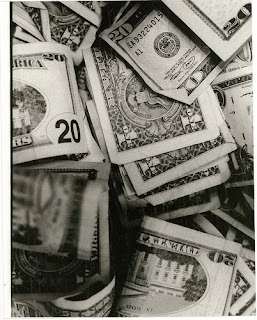
Even though I’ve put up a lot of blog posts about how writers can earn more, I find there’s still a missing link for many writers. They hear about $800 articles, $125 blogs, $20,000-a-year copywriting clients, and their jaws drop. And they cannot figure out how to get from $20 articles to there.
So today, I’m going to teach you how.
How do you do this? I just had a conversation with a new client and quoted him $75 per blog post. I really want to charge $100 per blog post. This client wants to try two blog posts per week. I know I’m a great blogger and have the experience to back it up. I really want to charge my rate and deserve it.
Plus, he wants web content writing. The content writing is for eight pages and the words will be from 60-100. I charged him $10 per page last time. I have a feeling I under charged and undercut myself. Any advice?
Oh, certainly I have advice. And my advice is simple: Stop offering to work for $10 a page.
Here is the secret of earning more. Look at your rate now, and raise it. Start saying your rate is $20 a page. Next month, say it’s $40 a page. Then, say it’s $80 a page. Repeat until you find you are earning at least $75 an hour.
So this is the part that terrifies writers. You think if you raise your rate, you won’t have any clients. That is simply not true. You may have fewer clients at first — but that’ll be OK, because you are getting paid twice as much, or soon, eight times as much. So you’ll need fewer clients.
How will you get new, better-paying clients? You’ll have to get out of your comfort zone, and find better-quality prospects.
Who’s a better prospect? A company or publication with something difficult they need solved, that not every writer on earth can do.
They need to explain insurance annuities to an audience of actuaries, or they want articles about technological advances in refrigeration units. Figure out what you know about that not everyone knows, and you’ve zeroed in on your target market for better pay.
Then, when you get in a negotiation, ask for real rates. It’s just that simple. There’s no magic. You’ll actually have to screw up the gumption to ask for good pay.
If they say $300 for this article, take a deep breath and say, “I usually get $500.” And see what happens. Maybe they’ll tell you they can’t go higher. But you’ll be surprised how often you can get more, especially now with the economy improving.
If your client balks, you may have to educate them about why you’re worth it. Maybe they’ll walk away. That means they’re not the right client for you — they’re too cheap.
But this is how writers earn more. They find clients with tough problems, and show they can solve them.
It really works. The writer who asked that question above? After talking to me, she went back and asked for $20 a page, and got it.
It’s a start. That’s how better income happens — one notch up the ladder at a time. All it takes is a commitment to move up from where you are, to begin the climb. The universe will not likely hand you more money out of the blue. You will have to ask for it.
Have you raised your rates lately? Leave a comment and let us know how you found better-paying gigs.
This post originally appeared on the WM Freelance Writer’s Connection.
